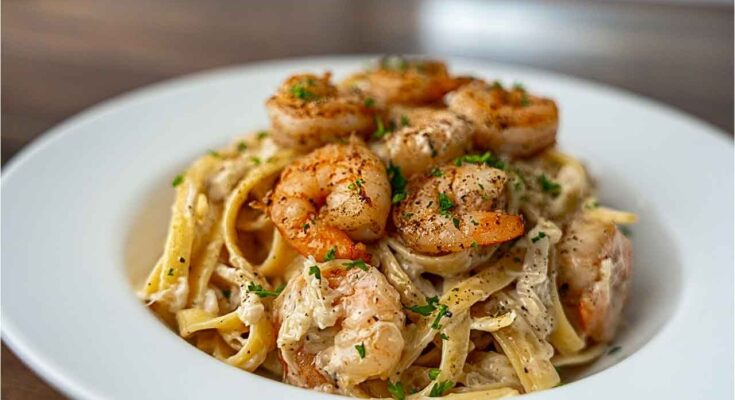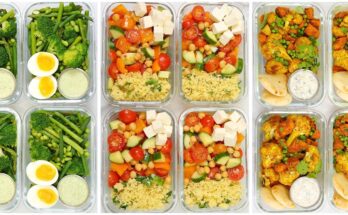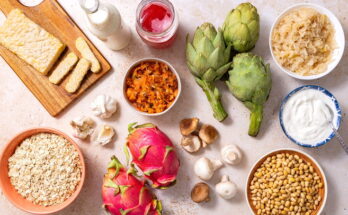Shrimp Fettuccine Recipe: If you’re looking for a dish that screams gourmet without demanding hours in the kitchen, shrimp fettuccine is your new go-to. It’s rich, creamy, and indulgent yet surprisingly easy to make. Whether you’re cooking a romantic dinner, treating your family, or just feeding yourself something extra special after a long day—this dish hits every note.
Shrimp fettuccine is all about balance. You’ve got the al dente pasta as your base, the buttery-sautéed shrimp providing that succulent seafood flavor, and a creamy Alfredo-style sauce tying everything together. And the best part? You can whip it up in under 30 minutes with just a handful of ingredients. It’s elegant but not fussy. Simple but not boring.
Plus, the aroma that fills your kitchen while this simmers on the stove? Absolutely mouthwatering.
Let’s dive into everything you need to make this crave-worthy pasta dish from scratch. Trust me, once you try it, this will be on your weekly rotation.
List of Ingredients You’ll Need
The beauty of this recipe lies in its simplicity. You don’t need fancy or hard-to-find ingredients—just a few high-quality basics that come together beautifully. Here’s a complete breakdown of what you’ll need to make the ultimate shrimp fettuccine.
For the Pasta
- 12 oz fettuccine pasta (fresh or dried)
- Salt (for the pasta water)
The star of the show: fettuccine. It’s wide enough to hold onto all that creamy sauce and hearty enough to complement the plump shrimp. Don’t skimp on salting the pasta water—this is your chance to infuse flavor right from the start.
For the Shrimp
- 1 lb large shrimp (peeled and deveined, tails off)
- 1 tbsp olive oil
- 1 tbsp butter
- 2 cloves garlic (minced)
- 1/2 tsp paprika (optional, for extra flavor)
- Salt and pepper to taste
When it comes to shrimp, fresh is always best—but frozen works too, as long as it’s properly thawed. Sautéing in a mix of butter and olive oil adds depth, while garlic and paprika elevate the flavor beautifully.
For the Creamy Alfredo Sauce
- 2 tbsp butter
- 2 cups heavy cream
- 1 cup grated Parmesan cheese (freshly grated, not the shaker kind)
- 1/4 tsp ground nutmeg (optional but adds warmth)
- Salt and black pepper to taste
This is the heart of the dish. Rich, velvety, and cheesy, Alfredo sauce clings to every strand of pasta. The trick is to keep it smooth and avoid overheating it—more on that in the cooking section.
Optional Add-Ons and Garnishes
- Fresh parsley (chopped, for garnish)
- Crushed red pepper flakes (for a spicy kick)
- Lemon zest or juice (for brightness)
- Extra Parmesan (because why not?)
These extras aren’t essential, but they can take your dish to the next level. A little green from parsley adds color, while lemon brightens the whole thing up.
Kitchen Tools You’ll Need
Cooking shrimp fettuccine doesn’t require any fancy gadgets. In fact, you probably have everything you need in your kitchen already.
Basic Cooking Tools
- Large pot (for boiling the pasta)
- Colander (to drain the pasta)
- Large skillet or sauté pan (for shrimp and sauce)
- Wooden spoon or silicone spatula (for stirring)
- Chef’s knife and cutting board (for prepping ingredients)
- Measuring cups and spoons
Simple tools are all you need to execute this dish flawlessly. A deep sauté pan is particularly helpful when it comes time to combine the pasta with the sauce and shrimp.
Recommended Extras
- Microplane or grater (for fresh Parmesan and lemon zest)
- Tongs (for tossing pasta in the sauce)
- Garlic press (if you prefer it over mincing)
These extras can make the process a bit more seamless but aren’t required. It’s more about ease than necessity.
Step-by-Step Guide to Making Shrimp Fettuccine
Now for the main event: cooking your shrimp fettuccine. Follow these steps closely, and you’ll be dishing up restaurant-quality pasta in no time.
Step 1: Prep Your Ingredients
Start by gathering everything you need — 8 ounces of fettuccine pasta, 1 pound of shrimp (peeled and deveined), 3 tablespoons of butter, 3 cloves of garlic (minced), 1 cup of heavy cream, ½ cup of grated Parmesan cheese, salt, pepper, and parsley or basil for garnish. Pat the shrimp dry and season lightly with salt and pepper. Having everything ready before you start cooking makes this dish come together quickly and smoothly.
Step 2: Cook the Fettuccine Pasta
Bring a large pot of salted water to a boil. Add the fettuccine and cook according to the package directions until al dente (tender but still firm to the bite). Reserve ½ cup of the pasta water, then drain the rest and toss the pasta lightly with a drizzle of olive oil to prevent sticking. Set aside while you prepare the shrimp and sauce.
Step 3: Sauté the Shrimp
In a large skillet, melt 1 tablespoon of butter over medium-high heat. Add the shrimp in a single layer and cook for 1–2 minutes per side, just until they turn pink and opaque. Avoid overcooking, or they’ll become rubbery. Remove the shrimp from the skillet and set them aside — they’ll go back in later to soak up all that creamy goodness.
Step 4: Make the Creamy Alfredo Sauce
In the same skillet, reduce the heat to medium and melt the remaining 2 tablespoons of butter. Add the minced garlic and sauté for about 30 seconds until fragrant. Pour in the heavy cream, stirring gently to combine. Let it simmer for 2–3 minutes to thicken slightly, then stir in the Parmesan cheese until melted and smooth. If the sauce becomes too thick, add a splash of the reserved pasta water to loosen it up. Season with salt and pepper to taste.
Step 5: Combine Everything Together
Add the cooked fettuccine to the skillet and toss to coat it evenly in the sauce. Return the shrimp to the pan and stir gently to combine, letting everything heat through for another 1–2 minutes. Sprinkle with freshly chopped parsley or basil for a pop of color and freshness.
Serve immediately while warm — creamy, garlicky, and loaded with tender shrimp. This Shrimp Fettuccine is restaurant-quality comfort food made right in your kitchen — silky, satisfying, and simply irresistible.
Pro Tips for the Best Shrimp Fettuccine
Let’s take your shrimp fettuccine from “yum” to chef’s kiss with a few expert tricks.
Cooking Shrimp Perfectly
Shrimp cook fast—we’re talking 3-5 minutes tops. Once they curl into a “C” shape and turn opaque, they’re done. If they’re curling into tight “O” shapes, they’re overcooked and could turn rubbery.
Quick tip: Dry the shrimp with paper towels before cooking. This helps them sear better and prevents a watery pan.
Getting the Sauce Creamy and Smooth
Your sauce should be silky, not gritty. That’s why fresh Parmesan is key—pre-grated cheese often has anti-caking agents that don’t melt well.
Avoid curdling: Never let the cream boil. Low and slow wins the race here. Constant stirring helps too.
Want a lighter sauce? You can swap half the cream for whole milk, but know that it won’t be as rich.
Balancing Flavors Like a Pro
Taste as you go! The balance of fat (cream and cheese), acid (lemon juice or zest), and salt (Parmesan and pasta water) is what elevates the dish.
- Want a little heat? Add a pinch of red pepper flakes.
- Need brightness? Squeeze half a lemon in just before serving.
- Craving umami? Toss in a teaspoon of anchovy paste or sautéed mushrooms.
Once you get the base recipe down, this dish becomes a blank canvas for your creativity.
Variations You Can Try
Shrimp fettuccine is incredibly versatile. Once you’ve nailed the classic version, there are plenty of ways to remix it for different flavors, dietary preferences, or just to keep things interesting. Let’s explore some tasty variations.
Spicy Shrimp Fettuccine
Craving a bit of heat? A spicy twist on this creamy classic is a total flavor bomb. Here’s how to do it:
- Add 1/2 teaspoon red pepper flakes when you sauté the garlic.
- Use Cajun seasoning on the shrimp instead of plain salt and pepper.
- Finish with a drizzle of chili oil or a dash of hot sauce.
The heat cuts through the richness of the cream, giving the dish a bold kick without overwhelming the other flavors. It’s perfect if you want something a little more exciting but still comforting.
Lemon Garlic Twist
For a lighter, brighter version of shrimp fettuccine, lemon is your best friend.
- Add zest and juice of 1 lemon to the Alfredo sauce.
- Use extra garlic (3–4 cloves) for a pungent punch.
- Garnish with fresh basil and more lemon zest on top.
This version feels fresher and less heavy, making it perfect for spring and summer meals. It pairs beautifully with white wine and a crisp salad.
Add Veggies for a Colorful Touch
Want to make your pasta more wholesome or colorful? Toss in some vegetables! Here are a few favorites:
- Spinach: Wilts quickly and blends beautifully into the sauce.
- Cherry tomatoes: Add juicy pops of flavor and acidity.
- Broccoli or asparagus: Blanch or steam lightly before adding.
- Mushrooms: Sauté with the shrimp for extra umami.
Adding veggies not only boosts the nutrition of your meal but also gives the plate more texture and vibrancy. It’s a great way to sneak in greens without sacrificing flavor.
What to Serve with Shrimp Fettuccine
While shrimp fettuccine is hearty on its own, pairing it with the right sides can elevate your meal to a full-blown feast. Here’s what complements it best:
Appetizers
- Garlic Bread or Breadsticks: Because every drop of that creamy sauce deserves to be mopped up.
- Bruschetta: Fresh tomato and basil cut through the richness.
- Caprese Salad: Mozzarella, tomatoes, and basil with a balsamic drizzle for a light start.
Salads
- Caesar Salad: The classic combo with creamy pasta. Crunchy, tangy, and delicious.
- Arugula Salad with Lemon Vinaigrette: Adds a peppery bite and balances the creamy main.
- Greek Salad: If you’re looking for a bold and zesty contrast.
Beverages
- White Wine: A crisp Pinot Grigio, Chardonnay, or Sauvignon Blanc pairs perfectly.
- Sparkling Water with Lemon: For a refreshing non-alcoholic option.
- Light Lager or Pale Ale: Yes, beer and pasta can be a match made in heaven!
These pairings bring balance to the plate, enhance the flavors, and create a more complete dining experience—whether you’re entertaining guests or just treating yourself.
How to Store and Reheat Leftovers
Let’s be honest—creamy pasta doesn’t always reheat well, but with a few tricks, you can bring leftover shrimp fettuccine back to life.
Storage Tips
- Fridge: Store leftovers in an airtight container for up to 3 days.
- Freezer: Not recommended due to the cream sauce, which can separate when frozen.
Reheating Instructions
Stovetop (Best Method):
- Add a splash of milk, cream, or reserved pasta water to a skillet.
- Gently reheat the pasta over medium-low heat, stirring frequently.
- Add shrimp at the end to avoid overcooking.
Microwave:
- Place pasta in a microwave-safe bowl.
- Add a tablespoon of milk or cream.
- Cover loosely and heat in 30-second bursts, stirring in between.
Avoid High Heat: This can cause the sauce to break or the shrimp to turn rubbery.
If you’re reheating more than once, try to separate the shrimp and reheat it only once. Overcooked seafood just isn’t pleasant.
Common Mistakes to Avoid
Even simple dishes can go sideways if you’re not careful. Let’s help you dodge the most common pitfalls when making shrimp fettuccine.
Overcooking the Shrimp
This is probably the number one issue. Shrimp only needs a few minutes to cook. Once it turns pink and opaque, take it off the heat immediately. Cooking it longer leads to that dreaded rubbery texture.
Boiling the Cream
If your cream sauce starts boiling, you’re in trouble. Boiling can cause it to curdle or separate, leaving you with a grainy mess instead of a velvety sauce. Keep your heat on medium to low and stir constantly.
Using Pre-Grated Parmesan
It’s tempting to reach for that green shaker bottle—but don’t. Pre-grated cheese contains anti-caking agents that prevent it from melting smoothly. Freshly grated Parmesan melts better and tastes infinitely more delicious.
Skipping the Pasta Water
That cup of pasta water you saved? It’s magic. If your sauce gets too thick or your pasta seems dry, a few tablespoons of that starchy water can fix everything. It also helps the sauce cling to every noodle.
Not Tasting as You Go
Underseasoned food is bland food. Always taste the sauce before combining it with pasta and shrimp. Adjust with salt, pepper, or acid (like lemon juice) as needed.
Health Benefits of Shrimp and Pasta in Moderation
Sure, shrimp fettuccine is indulgent—but when enjoyed in moderation and made with fresh ingredients, it can be part of a well-balanced diet. Let’s break down some of the health benefits packed into this comforting dish.
Nutritional Value of Shrimp
Shrimp isn’t just delicious—it’s also a powerhouse of nutrients.
- High in Protein: Shrimp offers about 20 grams of protein per 3-ounce serving, which helps support muscle growth and repair.
- Low in Calories: A serving of shrimp contains only about 84 calories.
- Rich in Vitamins and Minerals: Shrimp is loaded with selenium (an antioxidant), vitamin B12, iron, iodine, and zinc.
- Omega-3 Fatty Acids: These healthy fats support brain and heart health.
So yes—shrimp is small but mighty.
Benefits of Pasta (When Eaten Smartly)
Pasta sometimes gets a bad rep, but when portioned right and paired with lean protein like shrimp, it’s a great source of:
- Complex Carbohydrates: Fuel for your brain and body.
- Fiber (if using whole wheat or legume-based pasta): Good for digestion and heart health.
- Iron and B Vitamins: Essential for energy production and red blood cell formation.
To boost the nutritional profile, consider using whole wheat pasta or adding veggies like spinach, zucchini, or bell peppers.
Cream Sauce Considerations
Yes, Alfredo sauce is rich—but if you make it at home, you can control the amount of cream, butter, and cheese. Want to lighten it up?
- Use half-and-half instead of heavy cream.
- Mix in pureed cauliflower for a creamy texture with fewer calories.
- Add lemon or herbs to amplify flavor without extra fat.
So, enjoy shrimp fettuccine guilt-free once in a while—your body (and taste buds) will thank you.
FAQs about Shrimp Fettuccine Recipe
1. Can I use frozen shrimp?
Yes, frozen shrimp works just fine. Make sure to thaw them completely in cold water and pat them dry before cooking to avoid a watery skillet.
2. What pasta can I use instead of fettuccine?
You can swap fettuccine for linguine, spaghetti, or even penne. Just choose a pasta shape that holds sauce well. Wide noodles are best for creamy sauces.
3. Can I make this dish dairy-free?
Absolutely. Use plant-based butter, coconut cream or oat cream, and dairy-free Parmesan. The texture will differ slightly, but the flavor can still be amazing with the right seasoning.
4. How do I prevent the sauce from curdling?
Keep the heat low and avoid boiling the cream. Stir continuously and use fresh Parmesan (not pre-grated) to ensure a smooth sauce.
5. Is shrimp fettuccine good for meal prep?
It’s best enjoyed fresh, but you can meal prep it. Store the pasta and shrimp separately in the fridge and reheat gently with added cream or milk to keep it from drying out.
Conclusion
There you have it—the ultimate guide to making shrimp fettuccine from scratch. It’s creamy, dreamy, and loaded with juicy shrimp, all wrapped around perfectly cooked fettuccine noodles. Whether you stick with the classic version or branch out with bold flavors like Cajun spice or lemon zest, this dish delivers every single time.
Remember, the key to perfection lies in the details: fresh ingredients, proper prep, and a bit of patience while that sauce thickens just right. Once you master the base, you can make it your own with endless variations.
So grab a pan, pour a glass of wine, and get cooking—your taste buds are in for a treat.



